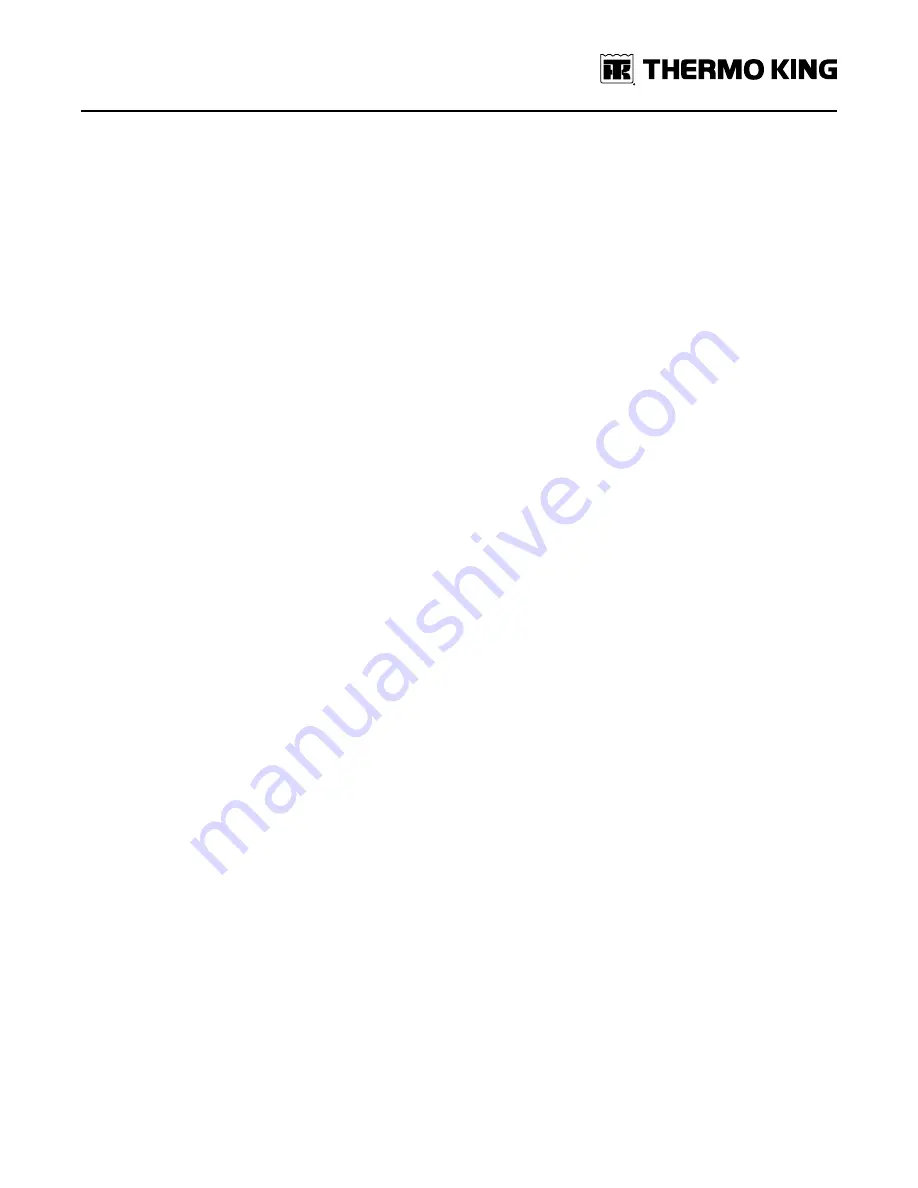
TK 56701-1-IM-EN
91
System Charging
IIm
mp
po
orrtta
an
ntt:: Unit must be leak checked and fully evacuated before charging.
1. Install a gauge manifold. Attach the low side gauge to the service port on the suction service valve. Attach the high
side gauge to the service port on the discharge line near the condenser.
2. Close the valves on the gauge manifold.
3. Mid seat the compressor suction service valve.
4. Connect a refrigerant supply to the gauge manifold service line and purge the line.
5. Set the refrigerant supply bottle to liquid and open the hand valve.
6. Open the high side gauge manifold valve. Add a partial charge of 10 lbs. (4.5 kg) of liquid refrigerant and close the
high side gauge manifold valve. The reminder of the charge will be added as a liquid through the low side gauge
manifold valve.
7. Set both zones to HIGH SPEED COOL through the HMI Service Test Mode.
8. Observe the suction pressure and slowly open the low side gauge manifold valve to allow liquid refrigerant to flow
into the compressor suction service valve
9. Control the liquid flow so the suction pressure increases approximately
20 psi (138 kPa).
10. Maintain a discharge pressure of at least 300 psig (2068 kPa) while adding refrigerant.
11. Close the low side gauge manifold valve when the receiver sight glass shows 1/2 to 3/4 full.
12. Establish a return air temperature of 0 F (-18 C), a suction pressure of 13 to 18 psig (90 to 124 kPa), and a discharge
pressure of 300 psig (2068 kPa).
13. Check the receiver tank sight glass. The refrigerant level should remain between 1/2 and 3/4 full over a period of no
less than 5 minutes.
14. Use a paint pen and mark the final amount of refrigerant charge on or near the condensing unit serial plate for
future reference.










































